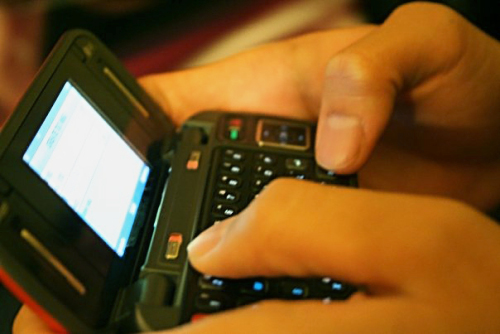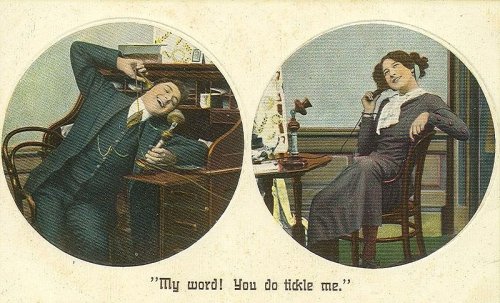Where did you find those photos? All of us can tell stories of old shoe boxes full of family snapshots turning up in the back of a closet, under a pile of boxes, or who knew where. What do you do when you find precious family memories? You certainly don’t want to dump them back into the box. Here’s what I did when I found a small suitcase filled with family photos, some taken nearly a century ago.
I created a photo book — my first. Here’ a sample page from the book I made for my mother as a Mother’s Day gift this year. The book, “Photo Vignettes from the Life of Frances K. Sullivan” (my grandmother) contains 46 of the best photos selected, scanned and restored from the mess I found in that suitcase.
Instead of a jumbled pile of old pictures, many of dubious quality, we have an archival quality, hard bound book. The images in that book are organized, tell a story (or stories) and brief comments identify people and dates.
A photo book lets you bring consistency to dozens of images. Since many of the originals were sepia toned, I used sepia toning throughout for uniformity. I played with the layout and image sizes as I went along. With a decent flatbed scanner and competent photo editor, it’s a simple task to enlarge small snapshots and reduce larger photos to fit
No other format that I know of can match a well designed photo book. In the end you’ll have a book that’s a pleasure to leaf through, easy to store and preserves memories for future generations.
Expensive? Not when you consider the cost of prints and a decent quality photo album. I went through some of our old photo albums today. What a mess! Maybe they were quality years ago but today they are deteriorated, plastic holders falling out. I pulled all the photos out and tossed two albums.
Never use one of those albums with the sticky pages and a plastic overlay. These things are supposed to hold the photos lightly. Don’t believe it. I have a few of these to go through and salvage what I can. After all these years, all the pictures in the albums are permanently glued to the pages. You cannot get them off without destroying the photos. The only way to save any of the photos is to scan entire pages. I can hardly wait.
As I flip through the pages I see too many photos that should have gone into the trash years ago. We save too many poor images. The key to a successful photo book is triage. Toss the garbage, the blurry, the silly, the who cares and concentrate on the good stuff. Select the best photos, images that celebrate special events, images that capture the essence of our loved ones at different times in their lives.
What about recent digital images? My daughter has hundreds of digital photos stored on a computer that refuses to boot. I’m going to try a rescue mission. Digital imagery has changed the way we make pictures, but permanent storage is an ongoing issue. Imagine your grandchildren finding a box full of CDs or DVDs 30 years from now. What are these things they’ll say? Even if they know what’s on them how will they view the content and will those CDs or DVDs even work?
Now imagine your grandchildren leafing through an archival quality photo book. Can you picture them sitting together reliving the memories? I can. I’ll have more to say on the topic of photo books in subsequent posts. I’m sold on the concept and when my latest order of six new books arrives later this week, I’ll have 10 volumes in my photo book library. Thank you AdoramaPix. I can hardly wait to tear the package open.
PS — I have a high quality e-book for each of my photo books as a bonus.









